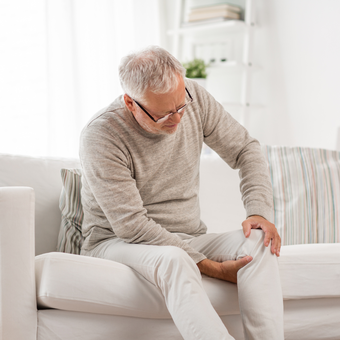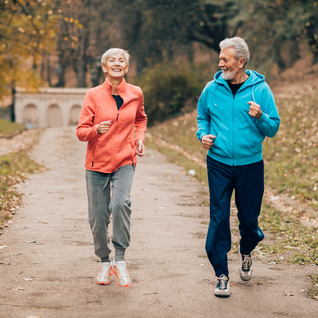|
Osteoarthritis is the most common form of arthritis in Australia. 1 in 5 people over the age of 45 will experience Osteoarthritis in one or more of their joints. While it most commonly affects the knee and hip joints it can be found in any joint throughout the body. It is not all bad news though, an ever-increasing body of research supports the use of exercise therapy as a treatment for Osteoarthritis. Exercise has been proven to help with both managing pain as well as improving function for people living with Osteoarthritis. (Skou et al., 2018) A common belief among those with Osteoarthritis, that we hear a lot at Simply Stronger, is that exercise or physical activity may cause more harm to their joint/s or make their osteoarthritis worse. This fear often leads people to become less active. It is important to understand that exercise will not progress your osteoarthritis or make it worse. In fact, being physically inactive is likely to cause more harm to our affected joints than being active. Inactivity can reduce the mobility and overall function of your joints, which can lead to more pain and less desire to be active. Pain can also play a big part for someone living with Osteoarthritis. We have been taught from a very young age that pain is bad, and that we should avoid pain. While that is an important lesson that has helped keep us all safe long enough to develop Osteoarthritis, avoiding osteoarthritis related pain has its limitations. It will likely feel counterintuitive, but it is ok to experience pain. When it comes to exercising with osteoarthritis sometimes, we will feel pain. The key is in understanding your pain and its limits. If the type of exercise is significantly increasing your pain, that’s when we should consider modifying or changing the type of exercise you are doing. This doesn’t mean that you stop exercising completely. All it means is that you consider changing the type of exercise or taking a few steps back with the exercise you are currently doing. However, what we have found is that if the type and amount of exercise you are doing isn’t increasing your pain, it is perfectly fine to continue with that form of exercise. Many of our clients living with Osteoarthritis have told us the pain and discomfort increased slowly over time, leading to gradual often unperceived reductions in movement and exercise. Not realising that moving less is actually causing more issues than staying active. The idea of getting started or increasing their exercise was a daunting one for many of them, so we were here to help with strategies to get started again. 4 strategies to help you get active with Osteoarthritis.Participate in exercise and activities you enjoy. We are more likely to participate in exercise if we are enjoying what we are doing. You will be more motivated to exercise if it is something that you are looking forward to. This could include not just the type of activity but who you do it with. Modify the exercise. If you find an exercise is increasing your pain it is time to modify it. This could mean a whole different activity or changing the activity you are doing. We refer to this as reducing the load of the exercise. This might involve decreasing weight or slowing down the pace at which you are working at. This way you are still moving, but in a more comfortable way. Take rest breaks. Rest breaks can be very handy when doing exercise. If you are experiencing a little more of a painful day, take longer rests between exercises. Seek support and advice If you find yourself unsure on where to start, that is where we as Exercise Physiologists come in. Working with an EP will allow you to ask any questions you have around your exercise prescription, pain and pain management, making you feel more comfortable with getting your body moving in a safe way. At Simply Stronger we have several ways you can use our services to help you be more active.
Skou, S., Klarlund Pedersen, B., Haxby Abbott, J ., Patterson, ., Barton, C. (2018). Physical Activity and Exercise Benefit More Than Just Symptoms and Impairments in People with Hip and Knee Osteoarthritis. Journal of Orthopaedic and Sports Physical Therapy, 48 (6), 439-447.
0 Comments
|
AuthorSimply Stronger - here to make exercise simple. Understanding why you should exercise is a giant step towards wanting to exercise. Archives
April 2024
Categories
All
|




 RSS Feed
RSS Feed